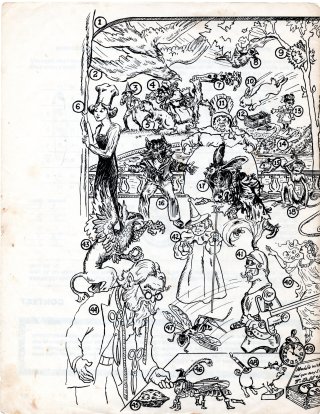
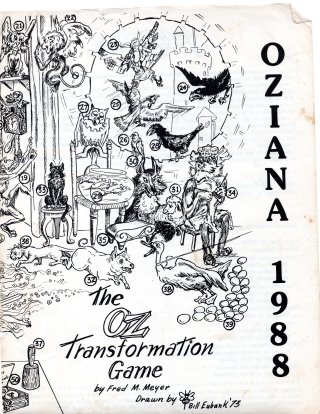
The 1988 Oziana has a game on both the front and back cover, derived by Fred Meyer and drawn by Bill Eubank. For each of fifty different transformations, the player has to guess who was transformed into what. I like a few of the subtle differences between characters who were turned into the same thing, as with the two Li-mon-eags. The answers are in the next issue, but since I didn’t have that until some years after this one, there were a few I wasn’t quite sure about. And even looking at the answers, there are a few that remain ambiguous. Our stories here are less of what I see as the traditional sort than in the last issue. We start with:
“The Computer Wizard Makes a Comeback,” by Phyllis Ann Karr – In the follow-up to the story from the 1986 Oziana, Oziah Gillikin and Corwin Poe’s wife Angela Garvey Garvey join in as characters in the role-playing game, the former as the Wizard of Oz and the latter as Tollydiggle. Dr. Poe has been in prison and developing a relationship with his jailor (who I guess isn’t married to the Soldier with Green Whiskers in this game), and is invited to program virtual scenarios into his computer. There are some interesting ideas as to what virtual worlds the Ozites want to visit, with the Scarecrow having discussions with Spock (Melody Grandy provided an excellent illustration of this pairing, Aunt Em visiting Paris, and Dorothy, Betsy Bobbin, and Trot attending the 2054 World’s Fair.
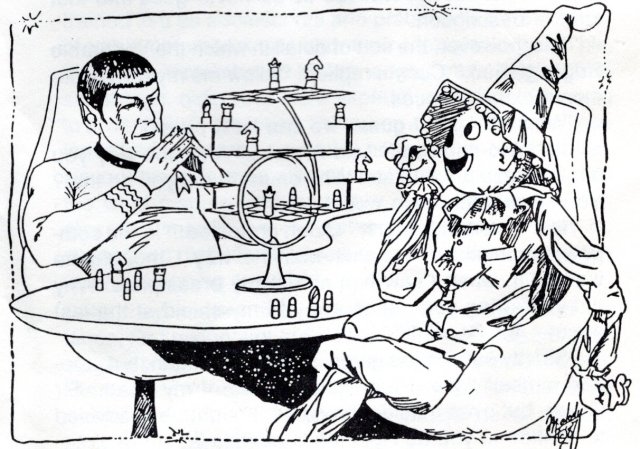
The Hungry Tiger is still reluctant to eat fat babies, even though they aren’t real. The Wizard gets a taste for dueling to the death with the programmer, doing so in various ways. The Computer Wizard tries for another takeover attempt by switching the actual residents with their virtual counterparts, which backfires when the Wizard’s avatar automatically wants to fight him.
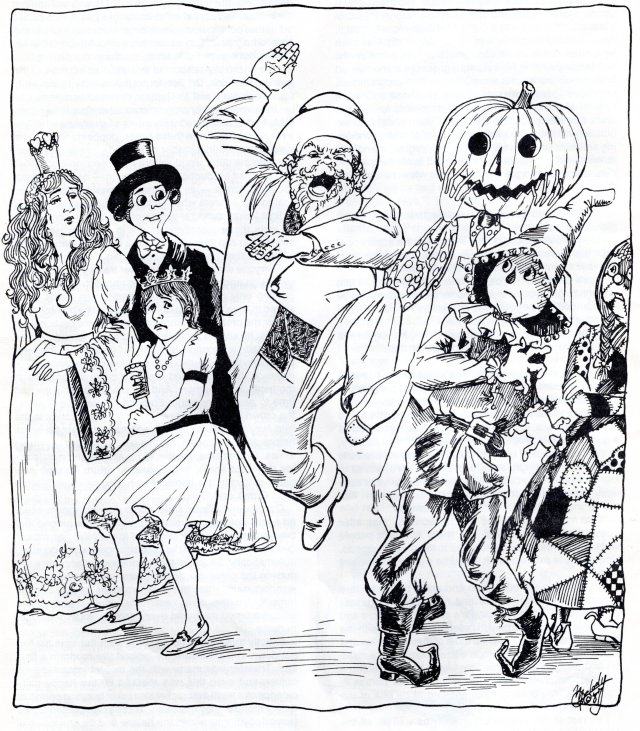
I’m not entirely sure why this would be, but it is set up pretty well, and maybe it’s like when the computer saves your most used programs or websites.
“The Northeast Wind in Oz,” by Wendy Roth – I met Wendy at an OzCon in Portland several years ago, although I didn’t bring up this story. It has Dorothy finding a music box in the attic, and inadvertently disenchanting a fairy who grants her a wish.
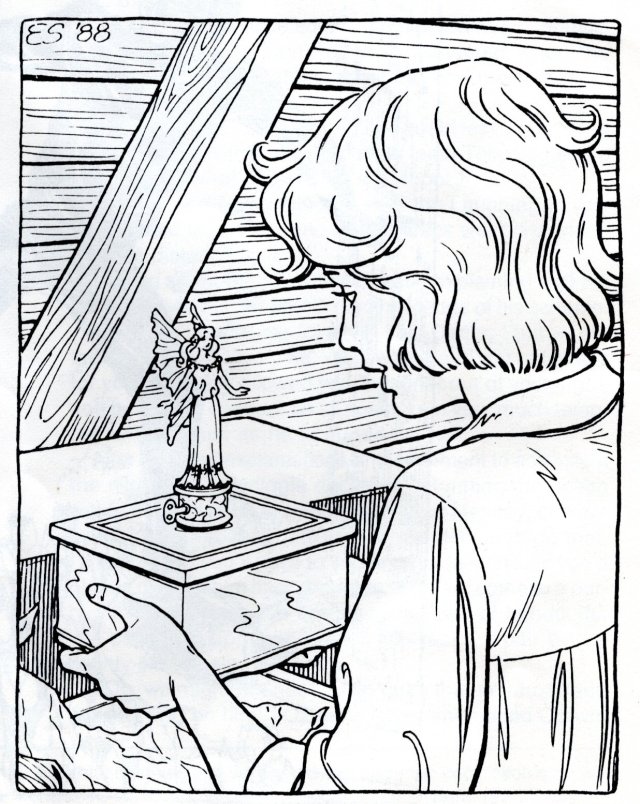
When Ozma asks the Magic Belt to find someone who could use a wish, it brings a boy named Nicholas to the Emerald City. He goes on a tour of Oz, and he and his companions run into Polychrome, who is looking for her cousin Ventilation. Nicholas’ wish and a live rope from the Gump help the characters to find the missing sky fairy, who is due to become the new Northeast Wind. There are a few oddities with the mechanics in the tale. King Evoldo, who is said to have drowned in Ozma of Oz, is somehow still alive, and turns into a person made of sand when he walks into the Deadly Desert. Also, Polly says Ventilation has been missing for a year, but he was captured by Evoldo when he was King of Ev. It’s not like it could be set less than a year after Ozma, as Nicholas has read Oz books. The story still works fine by itself, but is difficult to fit into the larger context of the series. I am interested in Typhonic, a villain who wanted to get rid of Ventilation so he could become the Northeast Wind instead. I mentally associate him with Thorgose from “Blue Raindrops,” as they’re both evil beings from the sky, and neither appears on-stage. Eric Shanower illustrated this one.
“Two’s of a Kind,” by Neal Wilgus – I’m not sure why the apostrophe is in the title, but this is a set of three limericks about interactions between characters. “McWogglebug” has the Wogglebug meet the Frogman, “Break Dance” describes a dance between Tik-Tok and the Tin Woodman, and “Stuff and Nonsense” has the Scarecrow and Scraps joking around with each other.
“A Side View of the Nonestic Islands,” by Timothy Perper and Martha Cornog – Most of this takes place in the Great Outside World, although Oz is definitely involved. An Army mission to test a new radar device finds a set of otherwise invisible islands in the Pacific, made up mostly of a landmass suspiciously similar to the Ozian one. That it can be found with powerful enough radar is likely based on how L. Frank Baum claimed to have used a radio telegraph to communicate with Oz after it became invisible. This presumably only applied to Oz itself, not the neighboring countries, but maybe Glinda or Lurline or someone expanded the spell to keep Outside Worlders from discovering fairyland. The ensuing investigation brings in John Smith, a conspiracy theorist who’s somehow related to Mr. Smith of Smith and Tinker, described as “an artist and inventor who had gone to the South Seas to open a machine shop.” H.P. Lovecraft’s Miskatonic University also exists in the United States of this story. Eventually, the military determines that they have a standing agreement not to interfere with Oz and its neighbors. In the introduction, Robin Olderman expresses the hope that the authors of this tale would write more for future issues, but I don’t believe they did.
Next time, the fiftieth anniversary of the MGM film inspires several odd takes.
